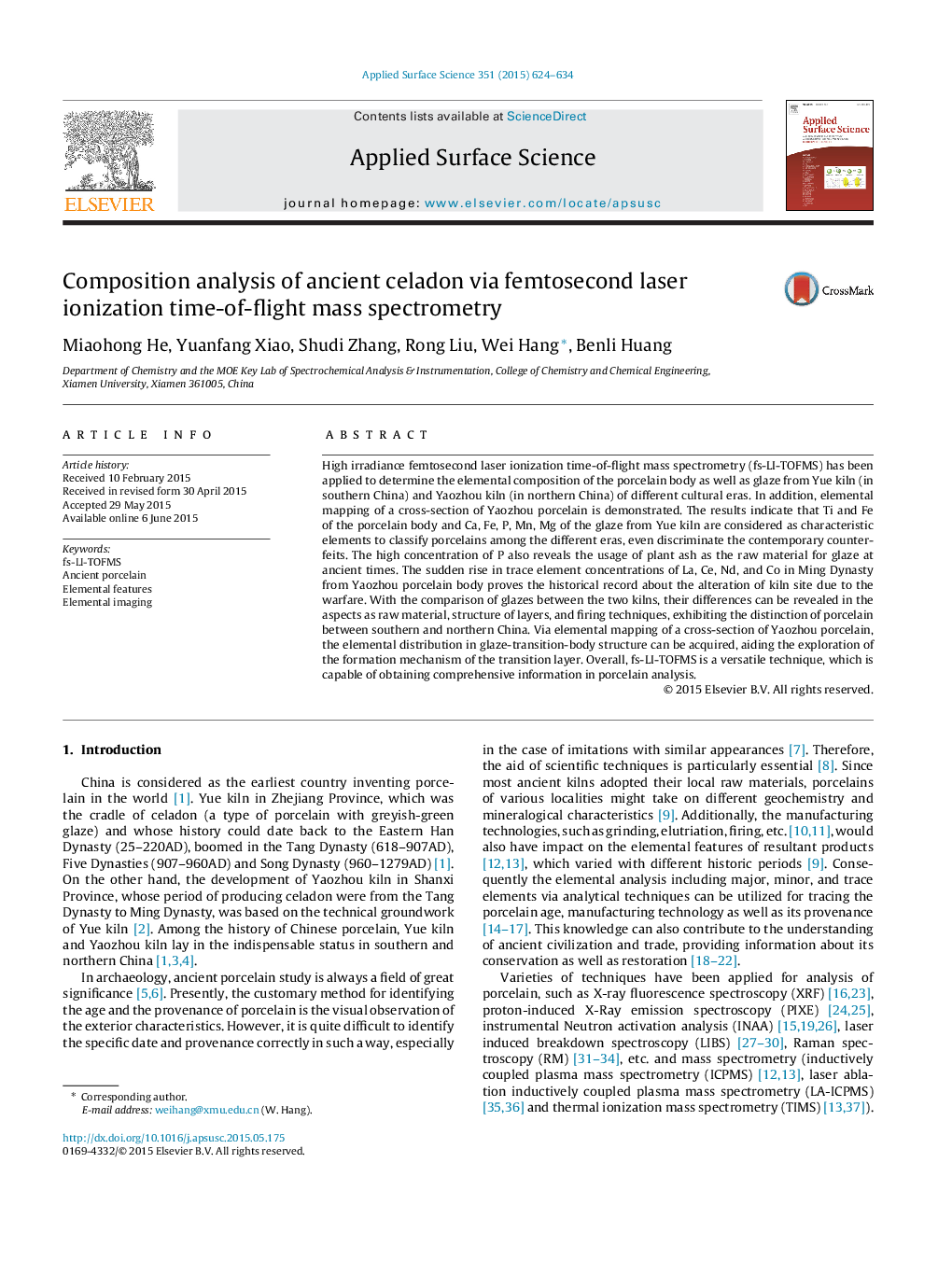| کد مقاله | کد نشریه | سال انتشار | مقاله انگلیسی | نسخه تمام متن |
|---|---|---|---|---|
| 5358000 | 1503613 | 2015 | 11 صفحه PDF | دانلود رایگان |
- Elemental features in porcelain body and glaze can be determined via fs-LI-TOFMS.
- Samples from different cultural eras and origins can be differentiated.
- Counterfeits can be distinguished, and historical events can be traced.
- Elemental imaging of glaze-transition-body cross-section is demonstrated.
- Formation mechanism of transition layer is explored.
High irradiance femtosecond laser ionization time-of-flight mass spectrometry (fs-LI-TOFMS) has been applied to determine the elemental composition of the porcelain body as well as glaze from Yue kiln (in southern China) and Yaozhou kiln (in northern China) of different cultural eras. In addition, elemental mapping of a cross-section of Yaozhou porcelain is demonstrated. The results indicate that Ti and Fe of the porcelain body and Ca, Fe, P, Mn, Mg of the glaze from Yue kiln are considered as characteristic elements to classify porcelains among the different eras, even discriminate the contemporary counterfeits. The high concentration of P also reveals the usage of plant ash as the raw material for glaze at ancient times. The sudden rise in trace element concentrations of La, Ce, Nd, and Co in Ming Dynasty from Yaozhou porcelain body proves the historical record about the alteration of kiln site due to the warfare. With the comparison of glazes between the two kilns, their differences can be revealed in the aspects as raw material, structure of layers, and firing techniques, exhibiting the distinction of porcelain between southern and northern China. Via elemental mapping of a cross-section of Yaozhou porcelain, the elemental distribution in glaze-transition-body structure can be acquired, aiding the exploration of the formation mechanism of the transition layer. Overall, fs-LI-TOFMS is a versatile technique, which is capable of obtaining comprehensive information in porcelain analysis.
Journal: Applied Surface Science - Volume 351, 1 October 2015, Pages 624-634
